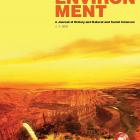Duarte, Regina Horta. “Urban Trees and Urban Environmental History in a Latin American City: Belo Horizonte, 1897–1964.” Global Environment 3 (2009): 120–53.
Belo Horizonte, founded in 1897 in south-eastern Brazil, was designed according to European models of what would constitute a “civilized” town in terms of sanitation and hygiene. Over the decades, however, its inhabitants have been confronted with challenges and obstacles determined by the specific historical context of Latin America. Duarte focuses here on an emblematic event, viz. the cutting down of 350 Ficus benjamina along the principal avenue of Belo Horizonte, just before the 1964 military coup d’état. This event caused much dispute between the city’s inhabitants, which would have emotional, urban, social and, above all, political significance. Rather than restricting herself to an analysis of this case study, the author uses it as the starting point for a discussion on the relationship between nature and society in Latin American urban environments. The case of Belo Horizonte exemplifies how studies of this theme must take the political and historical peculiarities of Latin American societies into account; societies that are enmeshed in transnational networks, the political and social significance of which can be seen in phenomena such as the acclimatization of ficus trees, the introduction of sparrows, and the attack of thrips. (Author’s abstract at The White Horse Press)
All rights reserved. Made available on the Environment & Society Portal for nonprofit educational purposes only, courtesy of Gabriella Corona, Consiglio Nazionale delle Ricerche / National Research Council of Italy (CNR), and XL edizioni s.a.s.


